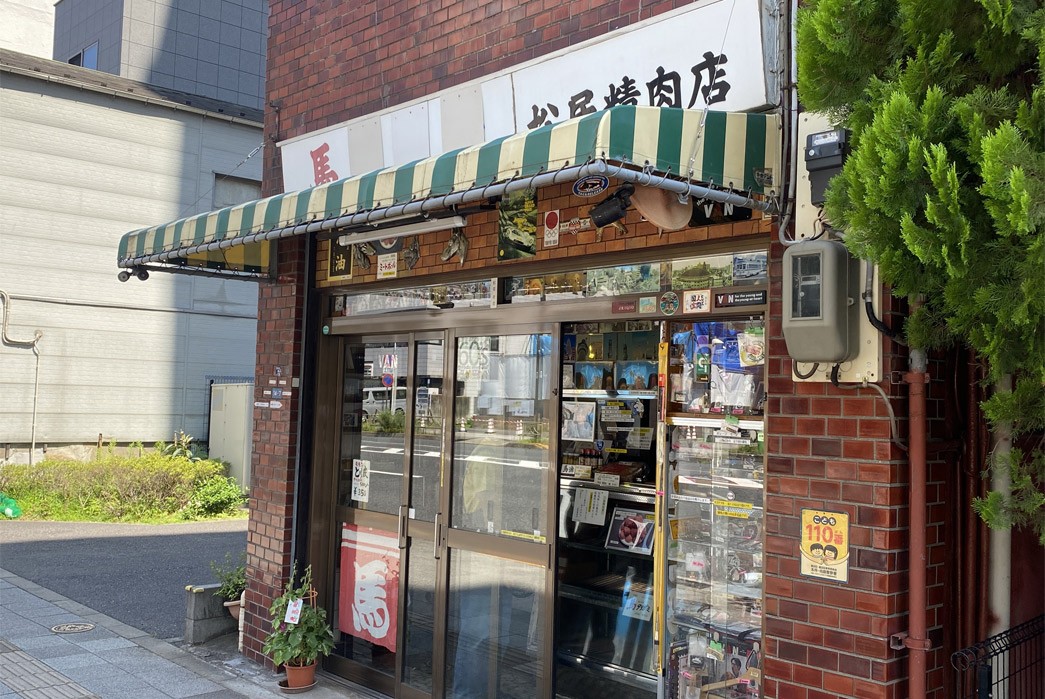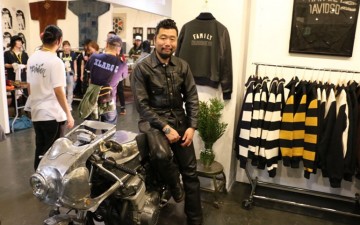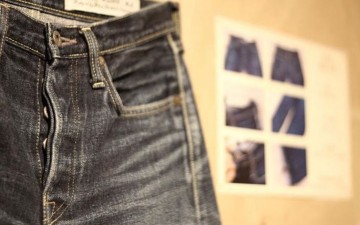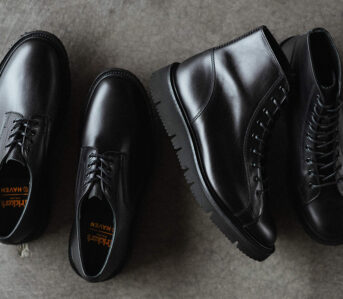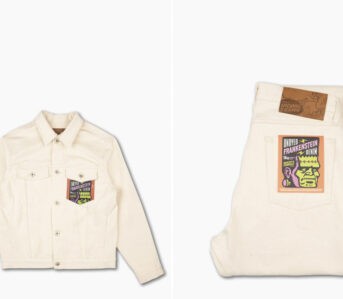In Tokyo’s northeastern district of Ryougoku, there is a butchery. A butchery owned by Matsui-san, the biggest Van Jacket fan in all of Ryougoku (maybe not all of Tokyo though. But at least in the top 30).
It was an errand-packed morning for me. I walked back from the post office, stepping as far to the side as I could on the sidewalk, trying to squeeze under every bit of shade I could find from shop front displays. An otherwise unassuming Tuesday morning. Headphones in, noise canceling on, Tokyo heat blasting, walking, and thinking about my lunch plans.
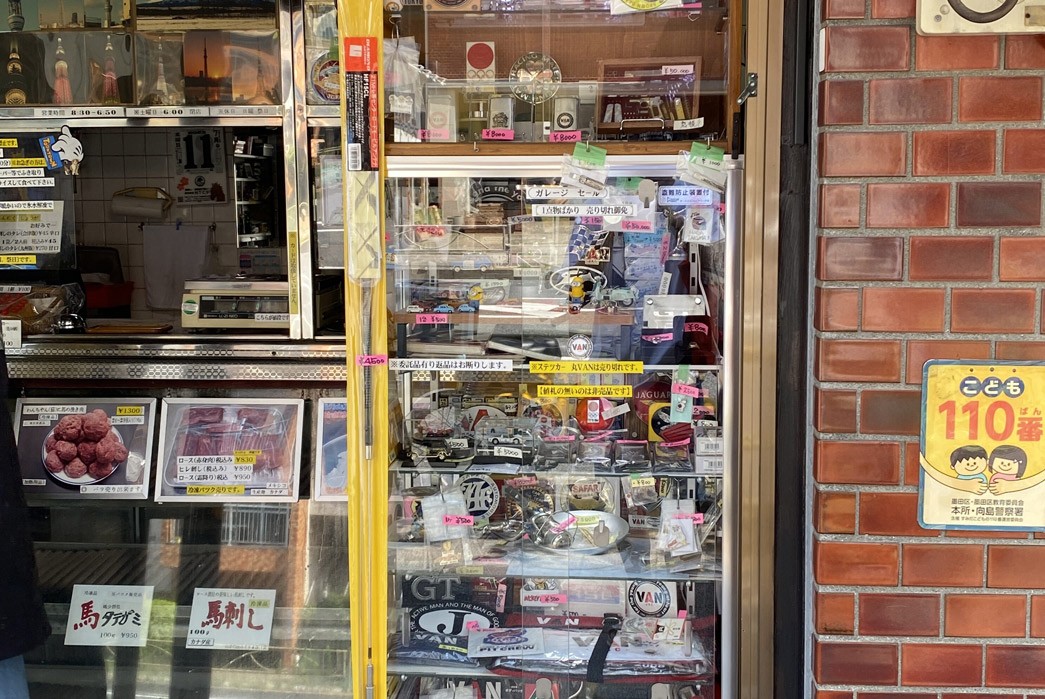
A packed, colorful display case outside a store caught my eye. I glanced over to see a display window filled top to bottom with Van Jacket branded signage, plates, and obscure memorabilia.
Before W. David Marx published Ametora in 2015, Van Jacket was hardly known by anyone in the non-Japanese-speaking world (if you knew about Van Jacket pre-2015, you can come claim your bragging rights now). Van Jacket, colloquially known as Van, is a heavyweight (or rather, was a heavyweight. They went bankrupt twice, and is now a label under new ownership) in Japanese menswear. Although Van Jacket doesn’t get much press outside of Japan or Americana menswear niches, the brand’s influence formed the foundations for today’s Japanese fashion landscape.
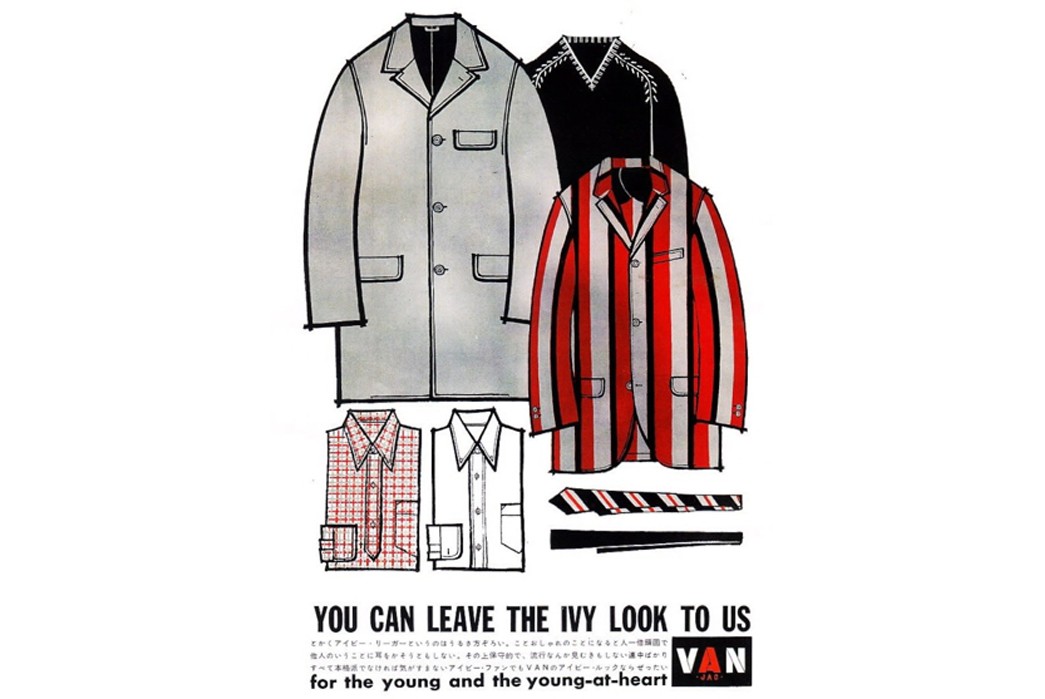
Image via the Ivy Style blog
As David Marx explains in a New Yorker piece,
“…a brand called VAN Jacket, whose founder, Kensuke Ishizu, hoped to make Japan’s first clothing specifically for young men. He toiled for a decade trying to sell ready-to-wear in the menswear market, but older, wealthy men would not give up their tailors. Ishizu decided to target younger customers instead, but all the contemporary trends, whether aggressive Hollywood one-button jacket styles or V-shaped silhouettes from Europe, looked sinister on the backs of college students.
“During a 1959 world tour, Ishizu took the train from New York to Princeton University, where he found the perfect look for Japanese teens. The students’ tweed jackets, striped ties, oxford button-down shirts, and khaki pants had a youthful flair while still looking respectable to adults. Ivy clothing was also a good investment for the impoverished Japanese postwar consumer: durable, functional, traditional, and in easy-to-clean natural materials.”
The 60’s Van Jacket era marked Japan’s Ivy fashion trend. The “Ivy Boom.” An obsession with Northeastern America’s preppy, elite (at times snobby) fashion. Think boat shoes, madras shirts, and Oxford button-downs.
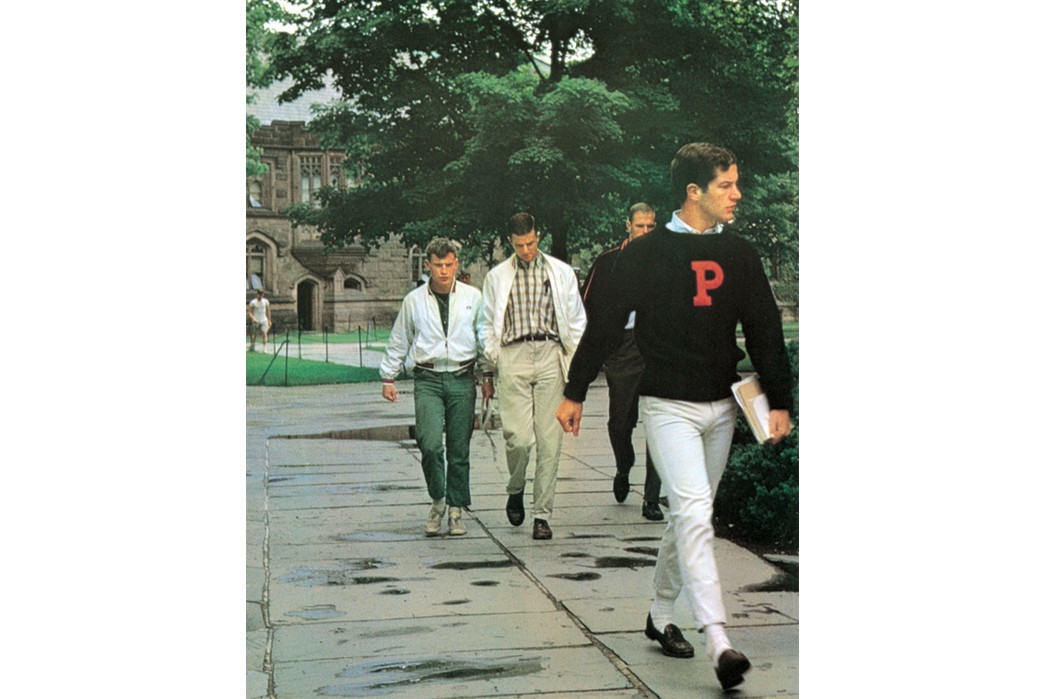
Image from Take Ivy via Powerhouse Books
Marx notes the influence of Ivy style on Japan’s fashion even today,
“…it’s (Ivy style) seeped into the basics of Japanese fashion culture. Brands like Beams, which is one the biggest boutique chains in Japan for youth fashion, starts like an American East Coast brand. And then Uniqlo—the founder of Uniqlo, Tadashi Yanai, his father operated a Van Jacket boutique in his hometown, so he also grew up around Ivy League style. Even though if you go to Uniqlo it doesn’t feel extremely Ivy League, it is kind of rooted in it. Basically in Japan, it emerges that the base fashion is Ivy League style and everything is basically splintered after that.”
Van is now a fairly uncommon sight in the streets of Japan. The brand is under a new ownership that can feel uninspired and flat (I say that, but I would still happily accept that jacket as a present). Boutiques and select shops no longer fight to stock Van. And Van is seldom found in wardrobes of anyone under 40. (Van’s slogan is “for the young and young-at-heart.” So I suppose they’re still succeeding in the latter demographic).
I stood outside and ogled at the display case. I took a few steps back and gazed up at the store sign, only to realize it was a butcher shop. I had to go inside.
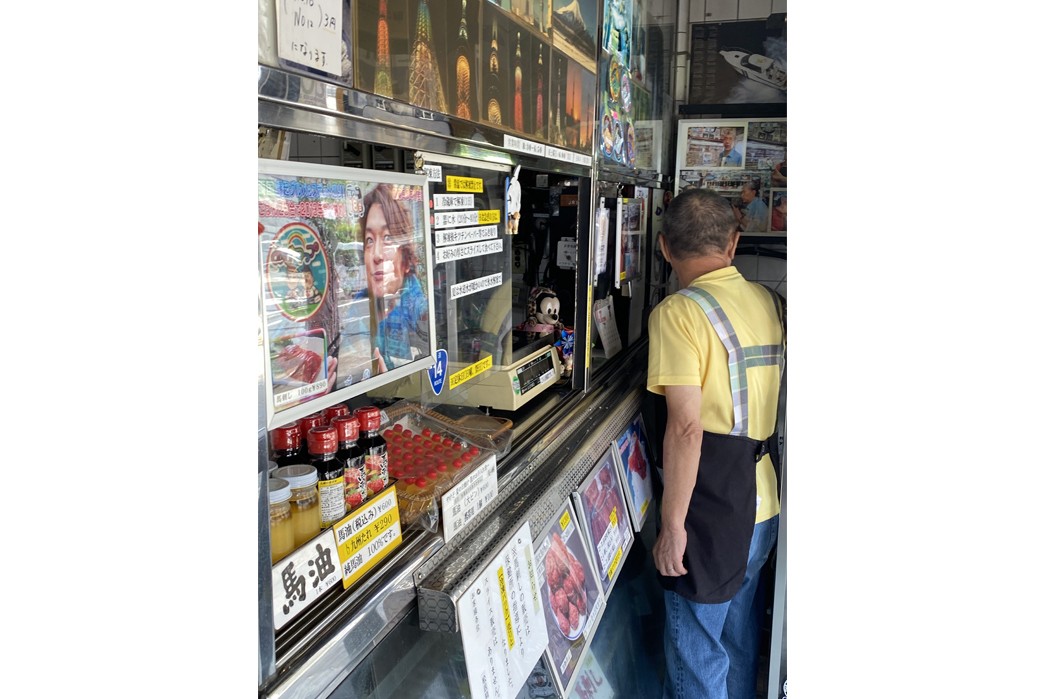
Inside, it’s a quiet store manned by a husband and wife couple. The husband, who I later learned to be Matsui-san, turned around from the back of the store and approached me at the register.
“What cut of meat of you after today?”
I stuttered a bit and explained that I wasn’t after any cut today. The Van Jacket memorabilia just caught my eye. Matsui-san grinned, “oh yeah?” He turned to his wife at the back of the store and called out, “This guy’s also a fan of Van!”
Matsui-san asked me if I wanted to see some more Van memorabilia. I’m sure you can guess my answer to that. He came across show me drawers upon drawers of more Van merchandise. Old hotel matches, pins, and badges just spilled out of each drawer. He took out a photo album and flicked through the pages, explaining each Van-related photo like a grandparent showing off photos of their grandkids.
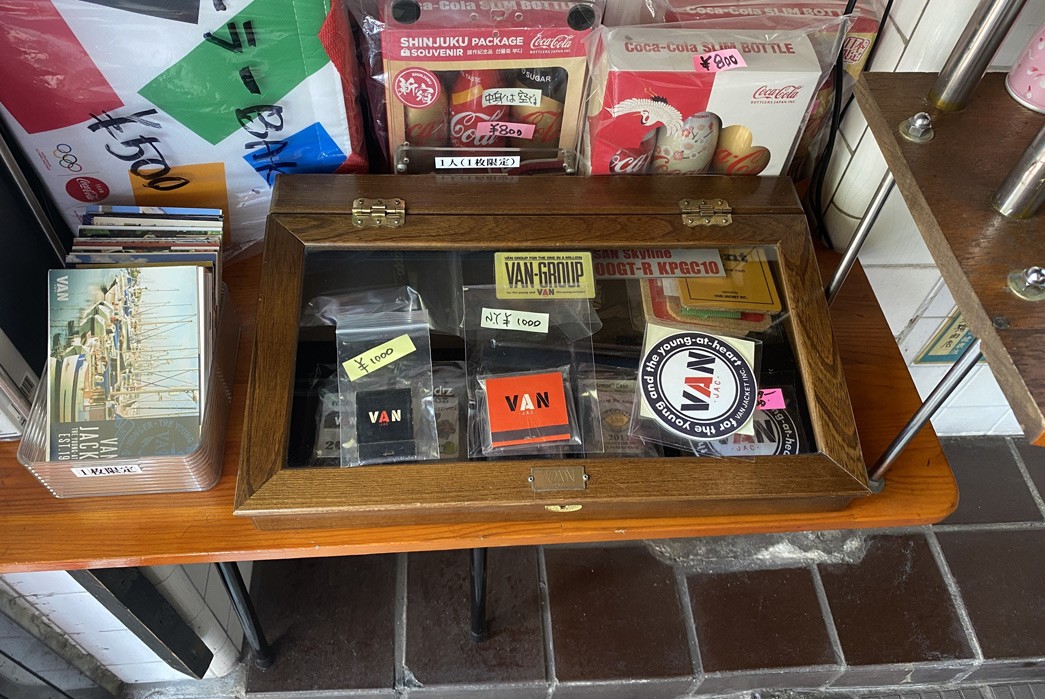
He opened another drawer and showed me old Van look-books from what feels like every season of the last half-century. “Take one,” he told me. I took one and gave him a big smile and bow. I also bought half a kilo of mince as a “thank you” of sorts.
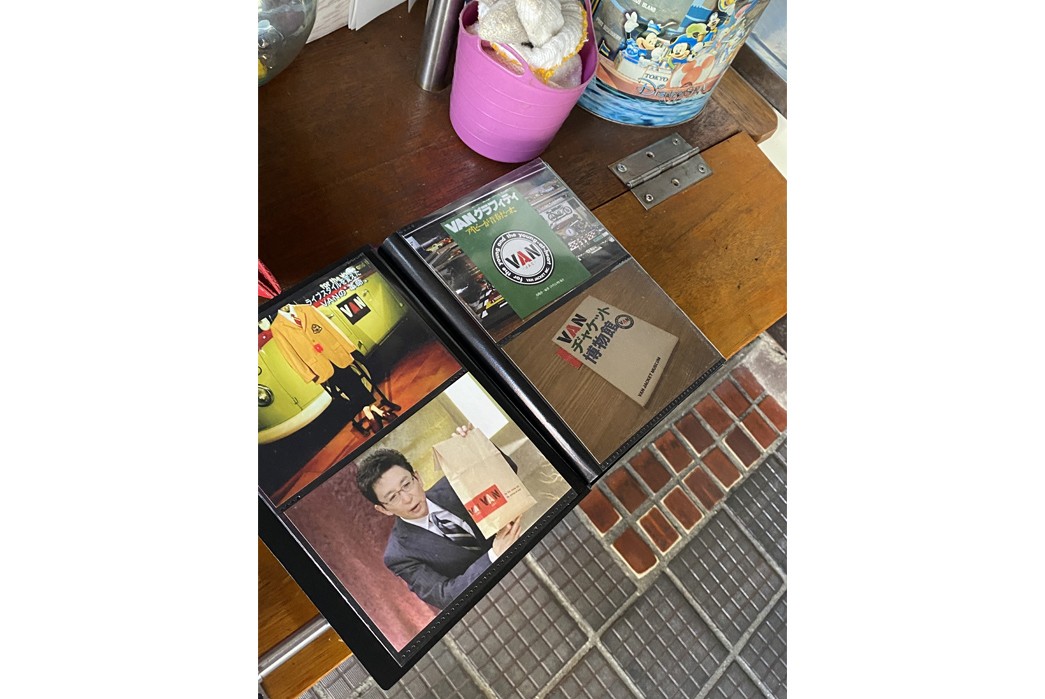
Before I left, he showed me his Van paper bag collection tucked away above the counter. At the height of Van Jacket and Japan’s Ivy fashion trend in the 60s, the Van logo itself was a symbol of style and trendiness. Think of the Van paper bag in the 60s as what the Bape face mask was to street fashion in 2017.
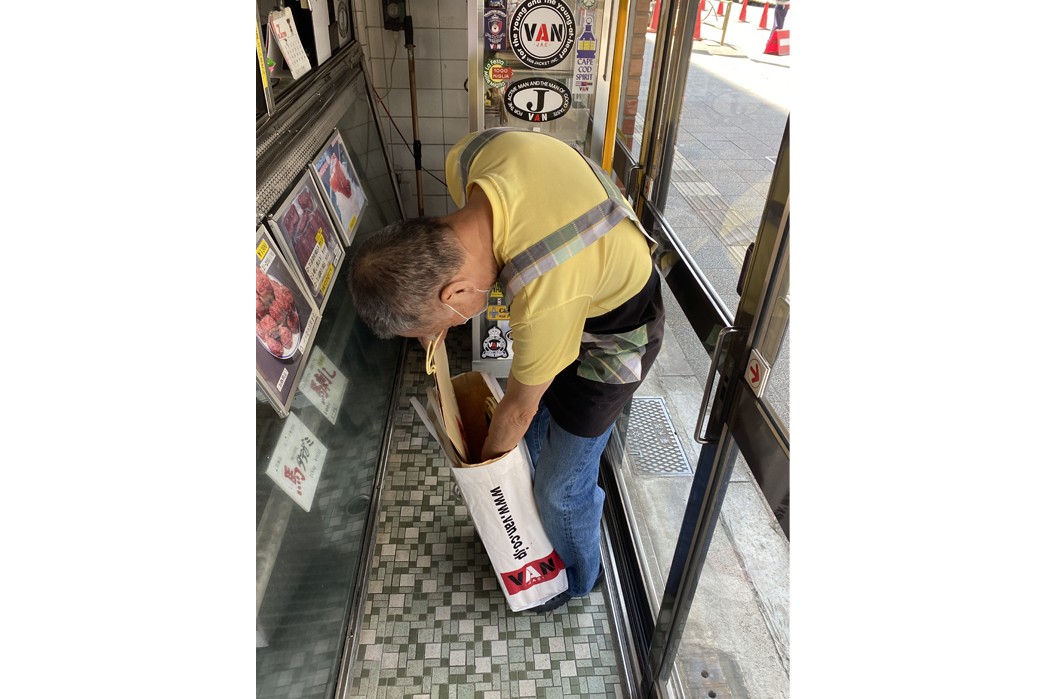
The blog Ivy Style explains the phenomena,
“And by 1964, Ivy League clothing became the cutting-edge fashion for Japanese middle-class kids. Paper shopping bags with the VAN logo became the coolest possible accessory for kids, to the point where some youth who could not afford to actually buy anything in the shop would just put VAN stickers on old rice bags to fake their patronage.”
Judging from the size of Matsui-san’s paper bag collection, he must’ve been the Mr. Ralph Lauren of Ryougoku (Or maybe Ralph Lauren is the Mr. Matsui of New York).
Thank you Matsui-san. Thank you for taking the time to show me a bit of your world. It’s a beautiful reminder of a different world.
Ivy-fashion (or at least, a cousin of Ivy fashion) is seeing a re-emergence in today’s fashion landscape. Tiktok’s algorithm is pushing the “old money trend” (what does that even mean?). Ripped skinny jeans make way for more classic, full cuts. And brands like Rowing Blazers, Paraboots, and G.H. Bass gain mainstream momentum in a “post-sneaker” and “post-hype” fashion sphere.
As Hegel’s fashion pendulum swings from the 2017-era big-logo, loud-colors, “hype” fashion to mainstream adoption of more quiet, classic, and sophisticated styles, perhaps Van has a chance at some newfound popularity (well, Van isn’t always quiet. But it is classic). Maybe after a quiet few decades, Van will again capture the hearts of both the young and the young-at-heart.
To learn more about Ivy, Van Jacket, and Ametora, check out the following articles:
